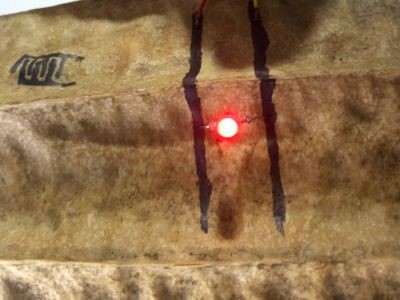
Credit: Adapted from ACS Applied Electronic Materials 2020, DOI: 10.1021/acsaelm.0c00866
Conductive ink is a great tool for printing flexible electronic circuits on surfaces. But these inks can be costly, they do not work on some materials, and devices to apply them can plug up. Now, scientists report in ACS Applied Electronic Materials that they have developed inexpensive conductive inks for clog-free ballpoint pens that can allow users to “write” circuits almost anywhere — even on human skin.
Flexible electronics are widely used in applications such as biosensors, electronic skin and energy storage...
Read More






Recent Comments